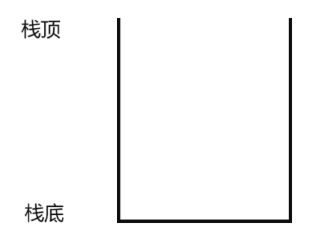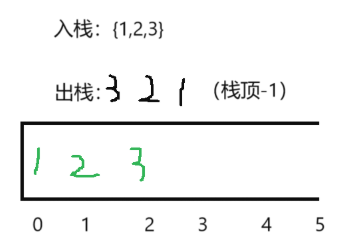数据结构 05(线性:栈和队列)
目录
栈
概念与结构
栈的结构
初始化与销毁
入栈
出栈
取栈顶元素
取元素个数
整体实现
Stack.h
Stack.c
队列
概念与结构
队列的结构
初始化与销毁
入队
出队
取队头和队尾元素
取元素个数
整体实现
Queue.h
Queue.c
栈
概念与结构
栈:一种特殊的线性表,其只允许在固定的一端进行插入和删除元素操作。进行数据插入和删除操作的一端称为栈顶,另一端称为栈底。栈中的数据元素遵守后进先出LIFO的原则。
压栈:栈的插入操作叫做进栈 / 压栈 / 入栈,入数据在栈顶。
出栈:栈的删除操作叫做出栈。出数据也在栈顶。

这里使用数组来实现栈,入栈出栈的时间复杂度都是 O(1) 。

栈的结构
栈和顺序表很像,把顺序表的size改为top。
typedef int STDataType;
typedef struct Stack
{STDataType* arr;int top; //栈顶int capacity;
}ST;初始化与销毁
void STInit(ST* ps)
{ps->arr = NULL;ps->top = ps->capacity = 0;
}void STDestroy(ST* ps)
{if (ps->arr)free(ps->arr);ps->arr = NULL;ps->top = ps->capacity = 0;
}入栈
就像顺序表的尾插,入栈也一样
void StackPush(ST* ps, STDataType x)
{assert(ps);if (ps->capacity == ps->top){int newCapacity = ps->capacity == 0 ? 4 : 2 * ps->capacity;STDataType* newarr = (STDataType*)realloc(ps->arr, newCapacity * sizeof(STDataType));if (newarr == NULL){perror("realloc fail!");exit(1);}ps->arr = newarr;}ps->arr[ps->top] = x;ps->top++;
}出栈
bool StackEmpty(ST* ps) //返回bool型判断
{assert(ps);return ps->top == 0;
}void StackPop(ST* ps) //出栈
{assert(!StackEmpty(ps));--ps->top;
}取栈顶元素
STDataType StackTop(ST* ps)
{assert(!StackEmpty(ps));return ps->arr[ps->top - 1]; // ps->top - 1
}取元素个数
int STSize(ST* ps)
{assert(ps);return ps->top;
}整体实现
Stack.h
#pragma once
#include<stdio.h>
#include<stdlib.h>
#include<assert.h>
#include<stdbool.h>typedef int STDataType;
typedef struct Stack
{STDataType* arr;int top;int capacity;
}ST;void STInit(ST* ps);
void STDestroy(ST* ps);
void StackPush(ST* ps, STDataType x);
void StackPop(ST* ps);
STDataType StackTop(ST* ps);
int STSize(ST* ps);
bool StackEmpty(ST* ps);Stack.c
#include"Stack.h"void STInit(ST* ps)
{ps->arr = NULL;ps->top = ps->capacity = 0;
}void STDestroy(ST* ps)
{if (ps->arr)free(ps->arr);ps->arr = NULL;ps->top = ps->capacity = 0;
}void StackPush(ST* ps, STDataType x)
{assert(ps);if (ps->capacity == ps->top){int newCapacity = ps->capacity == 0 ? 4 : 2 * ps->capacity;STDataType* newarr = (STDataType*)realloc(ps->arr, newCapacity * sizeof(STDataType));if (newarr == NULL){perror("realloc fail!");exit(1);}ps->arr = newarr;}ps->arr[ps->top] = x;ps->top++;
}bool StackEmpty(ST* ps)
{assert(ps);return ps->top == 0;
}void StackPop(ST* ps)
{assert(!StackEmpty(ps));--ps->top;
}STDataType StackTop(ST* ps)
{assert(!StackEmpty(ps));return ps->arr[ps->top - 1];
}int STSize(ST* ps)
{assert(ps);return ps->top;
}队列
概念与结构
概念:只允许在一端进行插入数据操作,在另一端进行删除数据操作的特殊线性表,队列具有先进先出FIFO。
入队列:进行插入操作的一端称为队尾。
出队列:进行删除操作的一端称为队头。


队列也可以数组和链表的结构实现,使用链表的结构实现更优一些,因为如果使用数组的结构,出队列在数组头上出数据,效率会比较低。
队列的结构
为了追求更高的效率,这里创建两个结构体,一个为队列本体,一个为队列的结点。
typedef int QDataType;typedef struct QueueNode
{QDataType data;struct QueueNode* next;
}QueueNode;typedef struct Queue
{QueueNode* phead;QueueNode* ptail;int size; //在数据多时,为了更好的知道队列内有多少元素,多
}Queue; //创建一个size来记录队列内元素的数量。初始化与销毁
void QueueInit(Queue* pq)
{assert(pq);pq->phead = pq->ptail = NULL;pq->size = 0;
}void QueueDestroy(Queue* pq)
{assert(pq);QueueNode* pcur = pq->phead;while (pcur){QueueNode* next = pcur->next;free(pcur);pcur = next;}pq->phead = pq->ptail = NULL;
}入队
void QueuePush(Queue* pq,QDataType x)
{assert(pq);QueueNode* newnode = (QueueNode*)malloc(sizeof(QueueNode));if (newnode == NULL){perror("malloc fail!");exit(1);}newnode->data = x;newnode->next = NULL;if (pq->phead == NULL){pq->phead = pq->ptail = newnode;}else{pq->ptail->next = newnode;pq->ptail = newnode;}pq->size++;
}出队
bool QueueEmpty(Queue* pq)
{assert(pq);return pq->phead == 0;
}void QueuePop(Queue* pq)
{assert(!QueueEmpty(pq));if (pq->phead == pq->ptail){free(pq->phead);pq->phead = pq->ptail = NULL;}else{QueueNode* next = pq->phead->next;free(pq->phead);pq->phead = next;}pq->size--;
}取队头和队尾元素
QDataType QueueFront(Queue* pq)
{assert(!QueueEmpty(pq));return pq->phead->data;
}QDataType QueueBack(Queue* pq)
{assert(!QueueEmpty(pq));return pq->ptail->data;
}取元素个数
int QueueSize(Queue* pq)
{//int size = 0;//QueueNode* pcur = pq->phead;//while (pcur)//{// ++size;// pcur = pcur->next;//}//return size;return pq->size;
}整体实现
Queue.h
#pragma once
#include<stdio.h>
#include<stdlib.h>
#include<assert.h>
#include<stdbool.h>typedef int QDataType;typedef struct QueueNode
{QDataType data;struct QueueNode* next;
}QueueNode;typedef struct Queue
{QueueNode* phead;QueueNode* ptail;int size;
}Queue;void QueueInit(Queue* pq);
void QueueDestroy(Queue* pq);
void QueuePush(Queue* pq, QDataType x);
void QueuePop(Queue* pq);
QDataType QueueFront(Queue* pq);
QDataType QueueBack(Queue* pq);
int QueueSize(Queue* pq);Queue.c
#define _CRT_SECURE_NO_WARNINGS
#include"Queue.h"void QueueInit(Queue* pq)
{assert(pq);pq->phead = pq->ptail = NULL;pq->size = 0;
}void QueueDestroy(Queue* pq)
{assert(pq);QueueNode* pcur = pq->phead;while (pcur){QueueNode* next = pcur->next;free(pcur);pcur = next;}pq->phead = pq->ptail = NULL;
}void QueuePush(Queue* pq,QDataType x)
{assert(pq);QueueNode* newnode = (QueueNode*)malloc(sizeof(QueueNode));if (newnode == NULL){perror("malloc fail!");exit(1);}newnode->data = x;newnode->next = NULL;if (pq->phead == NULL){pq->phead = pq->ptail = newnode;}else{pq->ptail->next = newnode;pq->ptail = newnode;}pq->size++;
}bool QueueEmpty(Queue* pq)
{assert(pq);return pq->phead == 0;
}void QueuePop(Queue* pq)
{assert(!QueueEmpty(pq));if (pq->phead == pq->ptail){free(pq->phead);pq->phead = pq->ptail = NULL;}else{QueueNode* next = pq->phead->next;free(pq->phead);pq->phead = next;}pq->size--;
}QDataType QueueFront(Queue* pq)
{assert(!QueueEmpty(pq));return pq->phead->data;
}QDataType QueueBack(Queue* pq)
{assert(!QueueEmpty(pq));return pq->ptail->data;
}int QueueSize(Queue* pq)
{//int size = 0;//QueueNode* pcur = pq->phead;//while (pcur)//{// ++size;// pcur = pcur->next;//}//return size;return pq->size;
}